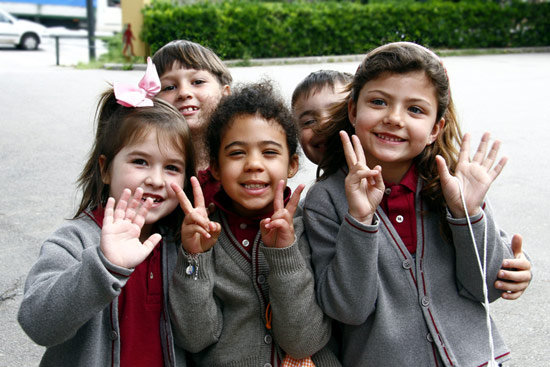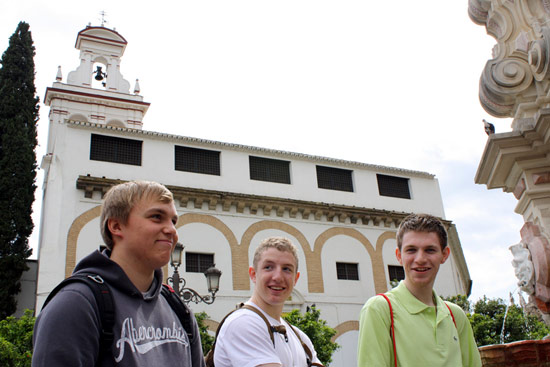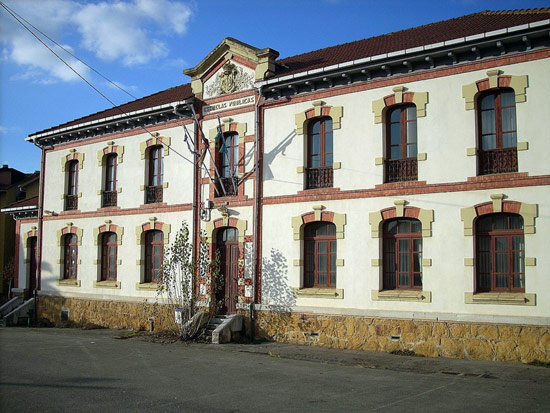Education: Education Structure
Introduction
Spanish children have 10 years of compulsory schooling between the ages of 6 and 16 years. Homeschooling is illegal in Spain with the exception of the Catalunya region. Girls and boys are educated together, and uniforms are not required in the majority of state schools.
In most Spanish state schools, the principal language of instruction is Castilian Spanish. However, in some regions, teaching takes place in Castilian combined with the co-official language(s) of the region, such as Catalan, Euskera (Basque language), and Galician. During the era of Franco, the use of regional languages was outlawed, which proved hugely unpopular with large portions of the indigenous populations in the various regions. Schools now have considerable autonomy on the teaching language used.
Formal structure of the school system
Primary
Type of school providing this education: Primary school
Length of program: 6 years
Age: 6 to 12 years
Secondary
Type of school providing this education: Institutos de Educación Secundaria, Colegios Privados, y Colegios Concertados
Length of program: 4 years
Age: 12 to 16 years
Certificate/diploma awarded: Graduado en Educación Secundaria Obligatoria
Higher Secondary
2 years
Age: 16 to 18 years
Certificate/diploma awarded: Título de Bachillerato or Título de Técnico
Children between the ages of three and six years have the option of attending preschool stage (escuela infantil or preescolar). This is non-compulsory, but is provided free of charge. It has become regarded as an integral part of the education system with preschool classes provided by almost every primary school. There are also some separate nursery schools called colegios infantiles.
Primary education lasts for six years. It is structured into three cycles of two years each, in which students receive gradually more challenging lessons.
Educación secundaria obligatoria (ESO, compulsory secondary education) lasts for four years (from 12 to 16) and is divided into two cycles of two years each. This leads to the award of the Graduado en Educación Secundaria Obligatoria certificate. This certificate is required for continued (non-compulsory) secondary schooling or intermediate vocational training (ciclos formativos de grado medio).
Higher secondary education consists of a core curriculum of compulsory subjects and a specialist component with a few pre-selected branches from which to choose. Successful completion of the two-year program leads to the Título de Bachillerato. This is a university-level qualification recognized worldwide, but to enter a Spanish university, students must sit a further entrance examination (Prueba de Acceso a la Universidad). There is considerable regional variation in this examination.
Many students do not pursue an academic track, but opt for vocational training or ciclos formativos de grado medio. Successful completion of this leads to the award of the Certificado de Técnico in the relevant field. This certificate enables graduates to work in areas related to their training, to pursue further training, or to study for a bachillerato and ultimately enter university if they wish.
School Timetable
The official school calendar generally runs from mid-September until the end of June. This can, however, vary according to the region of Spain and the child's age group.
Term dates: (One) Mid-September to Christmas, (Two) Early January to Easter, (Three) Easter to end of June
School days: Monday to Friday
School hours: 09:00 to 14:00
Grading System
Secondary schools in Spain typically grade students on an 11-point scale, with 10 being the highest score possible and 0 being the lowest. The full scale is expressed as follows: 10, sobresaliente, matricula de honor (outstanding, honors); 8.5 to 9.9, sobresaliente (outstanding); 7 to 8.4, notable; 6 to 6.9, bien (good); 5 to 5.9, suficiente (satisfactory); and 0 to 5, insuficiente (unsatisfactory).
Spanish higher education institutions usually grade students on a similar 11-point scale, with 10 being the highest score and 0 being the lowest. The full scale is expressed as: 10, matrícula de honor (honors); 9 to 9.9, sobresaliente (outstanding); 7 to 8.9, notable; 5 to 6.9, aprobado (passing); and below 5, suspenso (failing).
Master’s and doctoral theses are often graded with the following descriptive terms: no apto (unacceptable), aprobado (passing), notable, sobresaliente (outstanding), and cum laude.
Cost of Schooling
Compulsory schooling in Spain is free of charge. Payment for books, materials, and/or any extracurricular activities depends on the region. In some regions, families are only charged for extracurricular activities, while in others, payment is expected for school materials. Low-income families can apply for grants to cover school materials.
Schools supply a list of what materials are required at the start of each school year, including art supplies and textbooks. This typically amounts to approximately €105 (€ = euro) per child. In some regions, families receive tokens from the local government to exchange for supplies in approved bookshops.
Special Schools
All state schools are required to provide lessons to students with special educational needs so that they make adequate progress and are able to integrate into school. If the local school is unable to provide appropriately for an individual student, then parents may request a transfer to a special school. Such schools have reduced class sizes of 10 to 12 pupils with teachers specializing in special education and/or hearing and speech disabilities. A medical assessment is required prior to admittance to a special school.
Certain schools in Spain were originally run by religious orders such as the Roman Catholic Church. These are referred to as concertado schools; they receive a subsidy from the central government while remaining outside the formal state school system. Religion normally includes the teaching of Catholic doctrine; however, schools are required to offer an alternative for children preferring to opt out. This may entail attending another class, waiting in the staff room with a teacher, or taking additional Spanish lessons.
Curriculum
Because preschool classes are free and widely available in Spain, most children have participated in them prior to arrival at primary school. Young children arrive at school capable of social integration within group environments and with a basic knowledge of arts and crafts, painting, music, and team games, as well as the fundamentals of reading, writing, and arithmetic. The primary curriculum therefore commences with subject matter almost immediately.
The primary curriculum covers the following subjects: Spanish language, maths, conocimiento del medio (a general-knowledge subject that includes biology, history, geography, general and local knowledge, and social awareness), physical education, art and crafts, and a second language (usually English but in some areas French). The local dialect and culture may also be taught as a subject.
A wide range of secondary curriculum subjects are taught, including natural science, social science, maths, Spanish language, art, music, French, English, sports, and technology. Project work, more relevant content, and continuous assessment have recently been added to school curricula.
Ministerio de Educación (Ministry of Education)
Calle Alcalá, 36
28071 Madrid
Tel: +34 90 221 8500
Web: www.mepsyd.es/portada.html
Copyright © 1993—2025 World Trade Press. All rights reserved.

 Spain
Spain 

